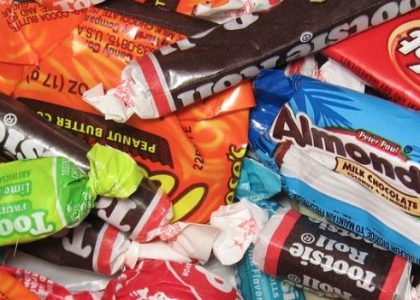We've suggested that the recent rally of more than 50% since August 24th in #11 sugar futures is unsustainable, even to the point that we sold the market early in October in anticipation of its failure. As usual, the market told us exactly what we could do with our, "suggestions." Fortunately, the consolidation between November and December has provided us with another chance to short the market. This time, perhaps even more decisively thanks to increased commercial trader selling as reported by the CFTC in its weekly Commitment of Traders report.
 There have been two main drivers of this rally and they're both variable. First, it's important to remember that sugar is a luxury good in most of the world. We're fortunate not to think of it that way. Also, the sugar market is expected to shift from surplus to deficit this year. This means that the weakening global economy and corresponding decline in demand could push the shift from sugar surplus to deficit out towards later this year. The second issue facing the sugar market and every other crop this year is El Nino. We've written extensively on El Nino and the truth is that the negative expectations have historically been worse than the actual damage. Once again, the same issues that are hurting the Southeast Asian crop are helping the Brazilian crop. It's important to take natural disaster news reports in context. El Nino typically does more property damage than crop damage.
There have been two main drivers of this rally and they're both variable. First, it's important to remember that sugar is a luxury good in most of the world. We're fortunate not to think of it that way. Also, the sugar market is expected to shift from surplus to deficit this year. This means that the weakening global economy and corresponding decline in demand could push the shift from sugar surplus to deficit out towards later this year. The second issue facing the sugar market and every other crop this year is El Nino. We've written extensively on El Nino and the truth is that the negative expectations have historically been worse than the actual damage. Once again, the same issues that are hurting the Southeast Asian crop are helping the Brazilian crop. It's important to take natural disaster news reports in context. El Nino typically does more property damage than crop damage.
Now, let's move to the actual trade setup and why we're even more convinced selling the market now than we were in October. The commercial traders had sold nearly 200,000 contracts between the August 24th bottom and our October short entry. Their selling plunged commercial momentum into negative territory, where it still lies. The rally also created a short-term overbought situation in the underlying sugar contract itself. This is our mean reversion setup. When the conflict between recent market movement and the commercial traders' net position arises, we begin looking for trading opportunities inline with the commercial traders' collective actions as this is typically the direction in which the market resolves its conflict. That being said, commercial traders are now short approximately 250,000 contracts. This is their third largest net short position. We believe in their collective conviction.

 The final piece of the short sale in sugar comes from our friends at Moore Research. We defer to them when it comes to seasonal analysis and we believe it's an important piece. Obviously, the sugar market is seasonal. Therefore, it behooves us to understand the cycle we're in. Looking at the seasonal chart below with the shaded area reflecting our emphasis, you can see that the March #11 sugar futures contract just dies into expiration.
The final piece of the short sale in sugar comes from our friends at Moore Research. We defer to them when it comes to seasonal analysis and we believe it's an important piece. Obviously, the sugar market is seasonal. Therefore, it behooves us to understand the cycle we're in. Looking at the seasonal chart below with the shaded area reflecting our emphasis, you can see that the March #11 sugar futures contract just dies into expiration.

Putting the whole trade together, we're selling the recent sugar rally because the slowing global economy should soften near-term sugar demand and push the market's shift to deficit farther out. The commercial traders have reached their third most bearish position in history. And, finally, the commercial trader selling comes on the cusp of a precipitous seasonal period for the March sugar contract. As always, we will be placing protective buy stops in the market. Currently at the year end's high of $.1524 per pound.





